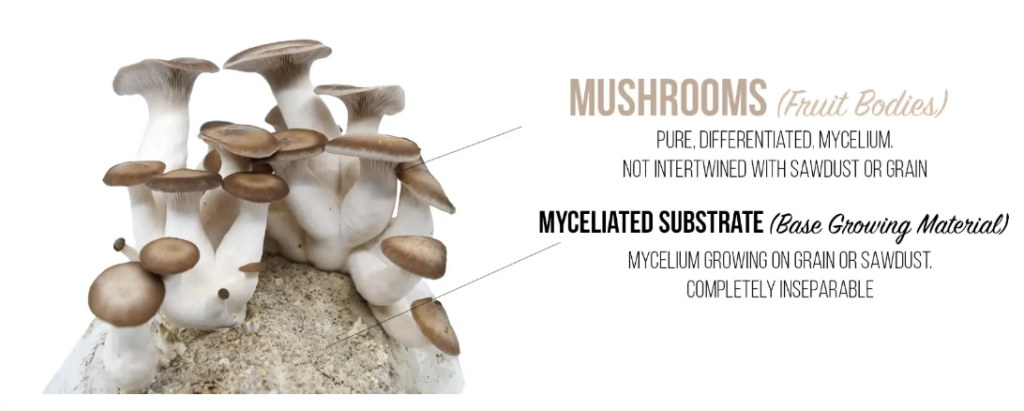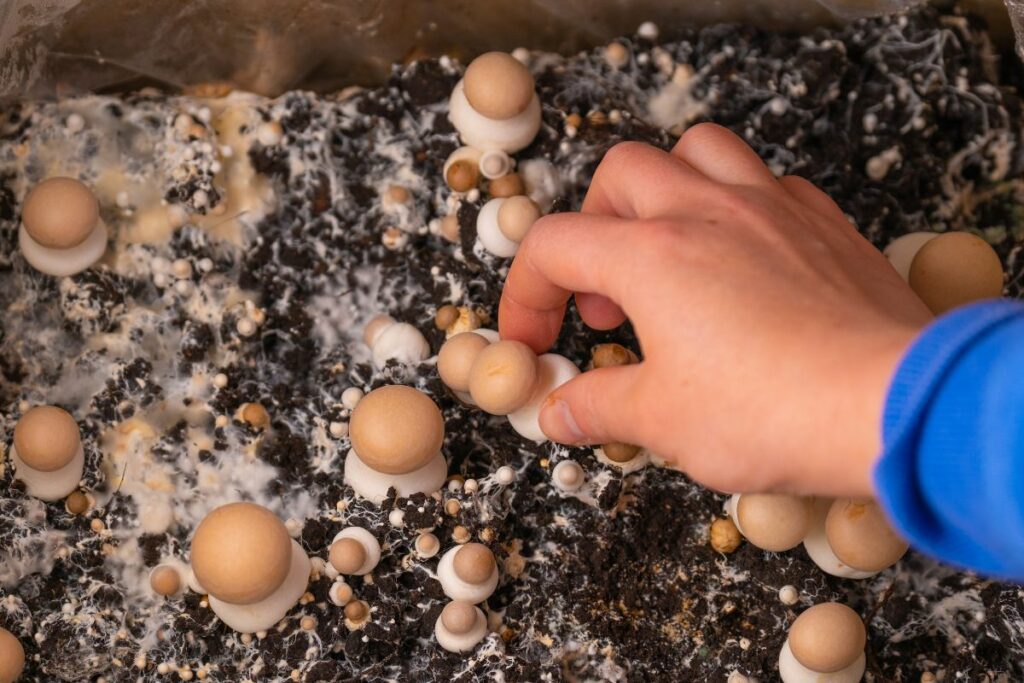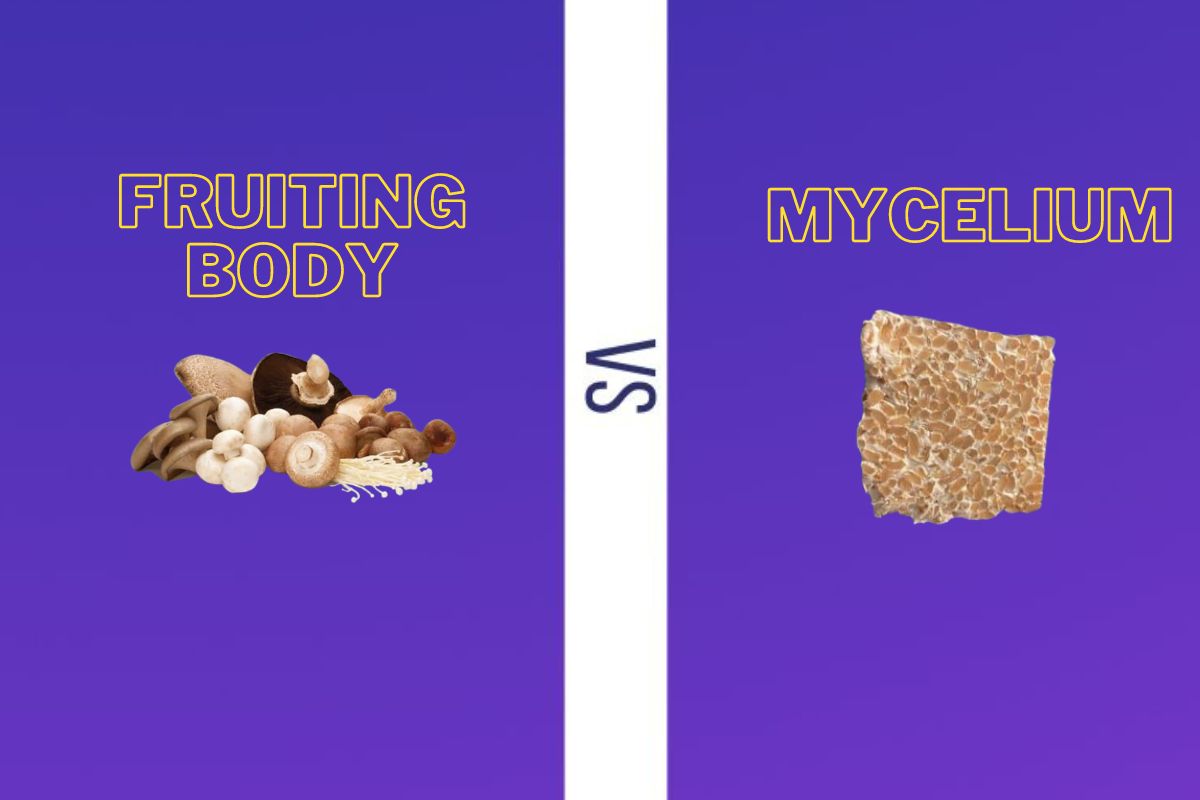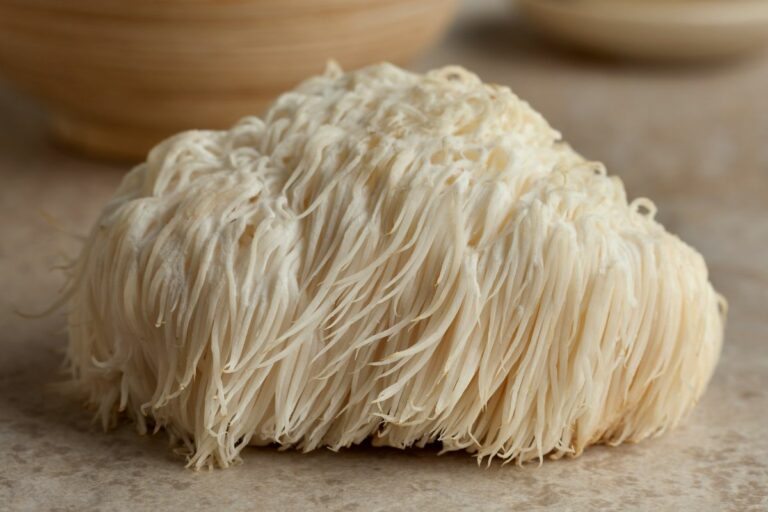Mycelium and fruiting bodies are two distinct stages of growth in the life cycle of fungi. Mycelium is the vegetative stage, forming a network of tiny thread-like structures called hyphae. These hyphae help fungi absorb nutrients from their surrounding environment. In contrast, the fruiting body is the reproductive stage, producing spores to continue the life cycle and ensure the survival of the fungal species. These fruiting bodies can take various forms, such as mushrooms, puffballs, and truffles, many of which are valued for their culinary and medicinal properties.
There is growing interest in understanding the differences between mycelium and fruiting bodies concerning their nutritional value, pharmacological properties, and chemical compositions. Researchers have been comparing the metabolites present in both stages and evaluating potential applications in food, medicine, and the biotechnology industry. Moreover, studies have been conducted to determine the nutrient composition of various fruiting bodies and mycelia, aiming to understand their respective benefits in terms of health and nutrition.
Comparing mycelium to fruiting bodies can provide valuable insights, especially when exploring their potential applications and advantages. Circumstances may also dictate the choice between the two, such as accessibility, cultivation methods, and availability of certain fungal species. By understanding and acknowledging the differences between mycelium and fruiting body stages, we can harness their unique properties and contributions to various industries, ultimately maximizing fungi’s potential benefits.
Understanding Mycelium
Table of Contents
Mycelium is the vegetative part of fungi, composed of a network of fine filamentous structures named hyphae. Each hypha is a thread-like construction that branches and extends, forming a complex web-like structure known as mycelia. Mycelium plays vital roles in mushroom development, penetrating and decomposing organic matter, which serves as its primary substrate.
The substrate, such as wood, straw, or compost, provides essential nutrients and moisture for mycelium growth. As it grows, the mycelium breaks down and absorbs nutrients from the substrate, contributing to the overall biomass of the fungi.
Mycelial biomass is often an indicator of potential mushroom fruiting and is the precursor for functional mushroom products. These functional mushroom products have gained significant popularity due to their potential health benefits and applications in various industries.

During mycelium growth, hyphae form densely packed masses that eventually develop into the fruiting body of the mushroom. The fruiting body is the reproductive organ of the fungi, producing spores for propagation.
Mycelium production is an essential aspect of the mushroom cultivation process. It serves as the foundation in mushroom farming, where the mycelium colonizes a specific substrate, allowing it to grow and transform nutrients into the desired mushroom species.
In summary, mycelium is a crucial component of the fungal life cycle, aiding in the decomposition of organic materials, creating biomass, and leading to the formation of mushroom fruiting bodies. Understanding the growth process and optimal conditions for mycelium development is vital for creating functional mushroom products and enhancing mushroom cultivation efforts.
| Characteristic | Mycelium Mushroom | Fruiting Body Mushroom |
|---|---|---|
| Reproductive Structure | Mycelium (underground) | Fruiting Body (aboveground) |
| Function | Growth and nutrient absorption | Reproduction and spore production |
| Appearance | Usually invisible, fine white threads | Visible, various shapes, sizes, and colors |
| Edibility | Generally not consumed, but some exceptions exist | Consumed for culinary and medicinal purposes |
| Nutrient Content | Typically lower in nutrients and flavor | Rich in nutrients, flavor, and aroma |
| Culinary Use | Rarely used in cooking | Mainly used in cooking, prized for their taste and texture |
| Lifecycle | Perennial, can live for many years | Annual or seasonal, short lifespan |
| Growth Conditions | Requires specific environmental conditions for growth | Grows in specific environmental conditions |
| Cultivation Difficulty | Often harder to cultivate | Can be cultivated more easily |
| Common Examples | Truffles (sclerotia), Cordyceps (parasitic) | Agaricus bisporus (button mushroom), Pleurotus ostreatus (oyster mushroom) |
| Medical and Therapeutic Use | Limited, primarily for research | Used in traditional medicine and some medical studies |
What are Fruiting Bodies
Fruiting bodies are the reproductive structures produced by fungi, particularly basidiomycetes. These structures are essential for the production and distribution of fungal spores, allowing for the propagation of the species. Fruiting bodies can take various forms, but for many people, the most familiar example is the mushroom fruiting body.
A mushroom fruiting body typically consists of a cap, gills, and a stalk. The cap is the umbrella-like structure found at the top of the fruiting body, and it serves to protect the gills. The gills, located beneath the cap, are thin, plate-like structures extending from the cap’s center, where they are connected to the stalk. The gills are responsible for producing and releasing spores into the environment. The stalk is the supporting structure that extends from the base of the cap down to the substrate, anchoring the fruiting body and elevating the spore-producing gills above ground level.
Fruiting bodies can vary greatly in size, shape, and color among different species of basidiomycetes. However, they all serve the essential function of producing and dispersing spores to ensure the continuation of the fungal lifecycle. It is important to note that while fruiting bodies may resemble the more familiar concept of a plant’s fruit, they are entirely distinct structures and serve very different purposes.
In some species of fungi, the fruiting bodies are known to have an impact on the nervous system of animals and humans when consumed. These effects can range from mild hallucinations to more severe toxic reactions, depending on the specific mushroom species and the compounds it contains.
In conclusion, fruiting bodies are vital structures in the fungal world, playing a pivotal role in the reproduction and survival of many species. They are fascinating objects of study for both their unique forms and the complex processes they facilitate.

Substrate Role in Growth
The substrate is a crucial factor for the growth and development of both mycelium and fruiting bodies in fungi. Different types of substrates, such as rice, oats, wood, sawdust, wheat, and rye, can be used to support fungal growth, with each providing unique properties and nutrients for optimal development.
- Rice, for example, is often used as a substrate for the cultivation of edible mushrooms. It provides essential carbohydrates and nutrients necessary for mycelium growth and fruiting body development. Similarly, oats and wheat are also used as substrates, offering a combination of carbohydrates and proteins for fungal growth. These substrates are typically sterilized and mixed with other essential components like vermiculite or gypsum to enhance water retention and support the growth process.
- Wood and sawdust, being rich in lignin and cellulose, are common substrates for the cultivation of wood-degrading fungi. They provide an abundant source of carbon, allowing the mycelium to produce enzymes that break down complex organic matter into simpler, easily absorbable compounds. Wood-based substrates are particularly popular for the cultivation of gourmet and medicinal mushrooms.
- Rye is a versatile substrate as it retains water well and provides a range of nutrients needed by various fungi. Often used for spawn production, rye is an essential component in the cultivation of several mushroom species.
- Throughout the growing process, certain environmental factors such as temperature, light, and humidity play a vital role in influencing the growth and development of mycelium and fruiting bodies. Optimal temperature varies depending on the fungal species, but generally falls within the range of 20-30°C for the mycelial stage. The fruiting bodies, on the other hand, may require different temperature conditions. For instance, some species need a decrease in temperature to trigger fruiting body development.
- Light is another critical variable, as some fungi require specific light wavelengths and durations to initiate fruiting body formation. Additionally, maintaining proper humidity levels is critical to prevent drying out of the mycelium and ensure successful fruiting body development.
In summary, the choice of substrate and the maintenance of optimal environmental conditions, such as temperature, light, and humidity, play a vital role in supporting mycelial and fruiting body growth. These factors, when carefully managed, can significantly impact the success of fungal cultivation.
Mushroom Species and Fruiting Bodies
Mushrooms, belonging to the phylum Basidiomycota, are a diverse group of fungi that exhibit distinct characteristics and provide unique benefits. Among the various edible mushrooms, Agaricus bisporus, Pleurotus ostreatus, and Lentinula edodes are some of the most well-known and consumed species due to their taste and health-promoting properties.
Agaricus bisporus, commonly known as the white button mushroom, is a popular ingredient in various dishes worldwide. It possesses antioxidant properties, which play a vital role in promoting health and preventing diseases. Pleurotus ostreatus, or the oyster mushroom, is another commonly used edible mushroom known for its delicate flavor and tender texture. It also has antioxidant and antimicrobial properties that contribute to its health benefits. Lentinula edodes, commonly known as Shiitake, is a highly prized culinary and medicinal mushroom known for its rich flavor and high nutritional value. Like its counterparts, Shiitake also contains antioxidants and other bioactive compounds that promote overall health.
Fruiting bodies are the reproductive structures of these fungi that serve as the primary source of edible mushroom tissues. The fruiting bodies of Agaricus bisporus, Pleurotus ostreatus, and Lentinula edodes develop from the mycelium, a complex network of filamentous cells that form the vegetative part of these fungi. Although fruiting bodies have been the traditional focus of mushroom consumption and research, recent studies have explored the potential of mycelium-derived products.
Mycelium has been found to possess similar or even higher concentrations of bioactive compounds compared to their corresponding fruiting bodies, depending on the species. A study conducted on Lentinula edodes disclosed that the mycelium and fruiting body both exhibited antibiotic and antioxidant properties (source). Another research on vitamin D2 content and antioxidant properties of fruiting bodies and mycelia of edible mushrooms highlighted that both forms of mushrooms have the potential to offer health benefits when exposed to ultraviolet light (source).
In conclusion, edible mushrooms, such as Agaricus bisporus, Pleurotus ostreatus, and Lentinula edodes, offer various health benefits due to their antioxidant properties. Both fruiting bodies and mycelia can be beneficial, as they contain bioactive compounds that contribute to overall health. However, it is essential to note that the concentration of these compounds may vary between species and the developmental stages of the fungi.
Nutritional Comparison of Common Fruiting Body Mushrooms
| Mushroom Species | Calories (per 100g) | Protein (g) | Carbohydrates (g) | Fat (g) | Dietary Fiber (g) | Vitamins & Minerals |
|---|---|---|---|---|---|---|
| Agaricus bisporus | 22 | 3.1 | 3.3 | 0.3 | 1.0 | Good source of B-vitamins, selenium |
| Pleurotus ostreatus | 33 | 3.3 | 6.0 | 0.4 | 1.0 | Rich in vitamin D, B-vitamins, iron |
| Cantharellus cibarius | 37 | 4.0 | 6.6 | 0.5 | 2.0 | Good source of vitamin C, vitamin D, and minerals |
| Tricholoma matsutake | 56 | 6.3 | 8.9 | 0.4 | 1.0 | Rich in potassium, phosphorus, and copper |
| Boletus edulis | 22 | 3.3 | 2.2 | 0.3 | 1.0 | Good source of vitamin B3 and minerals |
Health Benefits and Nutrition of Mycelium and Fruiting Bodies
Mycelium and fruiting bodies are essential parts of mushrooms and offer various health benefits. Both the mycelium and fruiting bodies contain crucial nutrients and compounds that bolster human health. Understanding the unique advantages of each aspect enables the proper usage and incorporation of mushrooms in supplements, diets, and therapeutic settings.
Mycelium refers to the thread-like vegetative part of a fungus. It is commonly used in the production of mushroom supplements because it’s more natural and quicker to cultivate. Mycelium is rich in polysaccharides, such as beta-glucans, which are known to support the immune system. Additionally, the mycelial biomass of some medicinal mushrooms like Cordyceps militaris demonstrates vital health-promoting properties. Mushroom extracts derived from mycelium also possess essential enzymes, antioxidants, and active compounds.
On the other hand, fruiting bodies are the most recognizable portion of a mushroom. They carry the spores needed for reproduction and serve as the primary source of dietary intake. Fruiting bodies are rich in protein, containing a broad range of amino acids and important nutrients. Furthermore, they offer ergosterol, a compound that converts to Vitamin D when exposed to ultraviolet light. The nutritional value and medicinal properties of these mushroom parts make them viable ingredients in functional mushrooms supplements.
Research shows that fruiting bodies and submerged cultured mycelia of culinary-medicinal mushrooms exhibit varying chemical compositions and nutritional profiles. While fruiting bodies tend to have higher concentrations of valuable compounds like beta-glucan and ergosterol, mycelium boasts a more accessible nutrient profile due to its structure.
Mushroom powders and extracts derived from mycelium and fruiting bodies offer an array of health benefits and can be included in dietary supplements in various forms. Some popular applications include OM Mushroom products, which feature mycelium-based powders and capsules that cater to specific health needs.
In conclusion, both mycelium and fruiting bodies contribute to the overall health benefits and nutritional value of mushrooms. Considering their distinct characteristics, incorporating either part into supplements and functional mushroom products can offer valuable health advantages to consumers. Their roles in supporting the immune system, promoting antioxidant activity, and providing essential nutrients make them valuable components of a healthy and balanced lifestyle.
Use of Mycelium and Fruiting Body in Medicine

Medicinal mushrooms have long been used in traditional medicine for their potential health benefits and therapeutic compounds. The two main components of these mushrooms, the mycelium and fruiting body, each offer a variety of medicinal properties, making them valuable in both medicine and dietary supplements.
Mycelium, the thread-like network of fungal cells, serves as the vegetative part of a mushroom, while the fruiting body is the reproductive structure that produces spores. Both components contain bioactive compounds, such as polysaccharides, proteins, and secondary metabolites that can contribute to their medicinal effects. However, their chemical composition and biological activity may differ between the mycelium and fruiting body.
For instance, studies on Fomitopsis betulina found that the extracts from fruiting bodies exhibited stronger antioxidant and antibacterial properties compared to mycelial cultures1. On the other hand, mycelial cultures of Fomitopsis officinalis were shown to contain higher amounts of therapeutic indole compounds than fruiting bodies2. These differences in composition may lead to variations in health benefits when using mycelium or fruiting body-based medicinal mushroom supplements.
In addition to using the whole mushroom, medicinal mushroom supplements can be produced using cultivated mycelium or fruiting bodies. The benefits of these supplements may vary depending on the specific mushroom species and the method of cultivation. For example, research on Cordyceps militaris revealed that both self-cultivated and commercially obtained fruiting bodies contained similar amounts of bioactive compounds3. Cultivated mycelium and fruiting bodies of this species have been shown to possess antioxidant and anti-inflammatory properties4.
In summary, both mycelium and fruiting body components of medicinal mushrooms offer various therapeutic compounds that can contribute to their potential health benefits. The choice between mycelium and fruiting body-based medicinal mushroom supplements may depend on the specific mushroom species, as well as the composition and biological activity of the extracts. Further research on the properties and applications of these components in medicine is necessary to continue exploring their potential contributions to overall health and well-being.
Food Industry Applications
Mycelium and fruiting bodies of fungi have become increasingly popular in the food industry due to their diverse applications. Both mycelium and fruiting bodies have unique properties that make them suitable for different purposes.
One significant application of mycelium in the food industry is the production of meat analogues. Mycelium-based products provide a sustainable and eco-friendly alternative to traditional meat sources. The high-protein content and fibrous nature of mycelium enable the development of meat substitutes with a texture similar to animal-based products. This characteristic appeals to the growing market of vegan foods and customers seeking healthier options.
Fruiting bodies, on the other hand, are commonly used as food items in various culinary dishes. They have a different nutritional and organoleptic profile compared to mycelium, making them attractive ingredients for unique food applications. For instance, fruiting bodies can be incorporated into protein isolates and supplements, further diversifying the range of vegan and vegetarian offerings.
The use of fungal biomass, including both mycelium and fruiting bodies, represents a sustainable alternative to traditional food production methods. The cultivation of fungi requires fewer resources and produces less greenhouse gas emissions compared to livestock farming. As a result, the adoption of fungal biomass in food production contributes to reducing the environmental impact of the food industry.
In terms of packaging, mycelium-based materials have been developed as an eco-friendly option. These materials are biodegradable and have shown potential for replacing petroleum-based plastics commonly used in food packaging. The implementation of mycelium packaging aligns with the industry’s shift toward more sustainable practices, while maintaining product quality and freshness.
Proper labeling for mycelium and fruiting body-based products is essential to inform consumers about the nutritional content and characteristics of these food items. Transparency in labeling allows consumers to make informed choices and increases the likelihood of them adopting these novel food products into their diets.
In conclusion, the food industry has seen multiple applications for both mycelium and fruiting bodies, spanning from meat alternatives and protein isolates to sustainable packaging materials. Their unique properties and advantages contribute to the growing adoption and demand for these products in the market.
Processing and Quality Assurance
In the production of mycelium and fruiting body-based products, processing plays a vital role in preserving the nutritional and medicinal properties of the mushrooms. One common technique used is fermentation, which allows the mycelium to metabolize organic material, generating valuable bioactive compounds and enhancing the mushroom’s health benefits1.
Quality assurance is also crucial, as it ensures that the products meet the desired standards of potency, purity, and safety. Regulatory bodies such as the FDA monitor and enforce quality standards through methodical inspections and compliance with Good Manufacturing Practices (GMP)^[2]. These guidelines cover various aspects of production, including the packing and labeling of products.
During the packing process, mycelium and fruiting body products are packaged in containers that protect them from contamination and preserve their quality. This step is essential, as improper packing can lead to the degradation of active compounds and loss of potency^[3].
Labeling is another important aspect, as it provides consumers with information about the product’s contents, intended use, dosage, and potential side effects. Accurate and informative labels help users make informed decisions and reduce the risk of adverse reactions. The FDA also regulates labeling to ensure that it is truthful, informative, and not misleading.
In addition to adhering to regulatory standards, manufacturers often conduct thorough quality control tests on their products. These tests may include the analysis of chemical constituents, nutritional profile, and bioactive compounds present in the mycelium and fruiting body. Following strict quality control measures can help producers improve the consistency, effectiveness, and safety of their products^[4].
In conclusion, the processing and quality assurance measures applied to mycelium and fruiting body products contribute significantly to their safety, efficacy, and market appeal. Adherence to guidelines, standardized production methods, and rigorous testing ensures that these products consistently meet the high standards expected by consumers and regulators.
Mycelium vs Fruiting Body: The Debate
When discussing fungi, there often exists a debate surrounding the mycelium and fruiting body, as each part plays a crucial role in the growth and reproduction of these organisms. Within this context, it is essential to consider their respective functions, the myths surrounding them, and the scientific perspective on these matters.
The mycelium refers to the thread-like filamentous structure that forms the vegetative part of a fungus, responsible for nutrient intake and overall growth. On the other hand, the fruiting body represents the reproductive structure, accountable for producing and dispersing spores. Thus, the primary difference between mycelium and fruiting body lies in their function: while the mycelium ensures the fungus’s growth and survival, the fruiting body is involved in reproduction and perpetuation of the species.
One of the prevalent debates in the field of mycology arises from studies investigating the differences in chemical properties and physiological efficacy between mycelium and fruiting body-derived compounds. For instance, a study comparing polysaccharides from the mycelium and fruiting body of Auricularia polytricha revealed variations in their structural, physicochemical, and oxidation resistance traits. Such differences have implications in their potential applications, particularly in the pharmaceutical and nutraceutical sectors.
Misconceptions and myths often fuel the debate surrounding mycelium and fruiting body. For example, some people mistakenly assume that mycelium-derived compounds are identical to those obtained from fruiting bodies. Researchers have shown that the chemical compositions of the two can significantly differ, with each containing unique bioactive compounds and exhibiting different properties and health benefits.
Another point of contention is the preference for relying on fruiting body presence as an indicator of fungal activity or biodiversity in the environment. However, research has shown that fruit body-based species lists can be increasingly complete in larger sampling units, where fruit bodies can be detected across multiple mycelial distances. This highlights the importance of incorporating both mycelial and fruiting body-based assessments for more accurate understanding of fungal activity and distribution.
In conclusion, the debate between mycelium and fruiting body centers around their functional differences, chemical properties, and misconceptions stemming from oversimplification of their roles in fungal life cycles. A clear understanding of these aspects is crucial for advancing scientific knowledge, promoting accurate assessment of fungal biodiversity, and harnessing the full potential of fungal-derived compounds in various industries.
Frequently Asked Questions
What is the difference between mycelium and fruiting body?
Mycelium and fruiting bodies are two different structures that make up a fungus. Mycelium are the vegetative, thread-like structures that form the main body of the fungus, responsible for absorbing nutrients from the environment. Fruiting bodies, on the other hand, are the reproductive structures that produce and release spores for reproduction. While mycelium are usually found below the surface or within substrates, fruiting bodies are visible above ground or on the surface of the substrate.
How do the benefits of mycelium supplements compare to fruiting body supplements?
Mycelium and fruiting body supplements both offer various health benefits, but there can be differences in their nutritional content and bioactive components. Fruiting body supplements typically contain higher levels of beneficial compounds such as beta-glucans, antioxidants, and certain minerals. Mycelium supplements may provide a broader range of beneficial compounds but may not have as high concentrations of specific nutrients. When choosing a supplement, it’s essential to consider individual health goals and research the specific supplement’s composition.
Are there any side effects of mycelium supplements?
Mycelium supplements are generally considered safe for most individuals, but side effects can still occur. Some individuals may experience allergic reactions or digestive issues such as bloating, gas, or stomach discomfort. It’s important to follow the recommended dosage and consult with a healthcare professional before starting any new supplement, especially if you have existing health conditions or are taking medications.
What is the role of spores in the life cycle of mushrooms?
Spores play a crucial role in the life cycle of mushrooms as they are the primary means of reproduction. When conditions are favorable, the fruiting body of the mushroom releases spores into the environment. These spores then germinate and produce new mycelium, which grows and expands, ultimately forming a new fruiting body and continuing the life cycle.
How does the growth of mycelium lead to the formation of fruiting bodies?
The formation of fruiting bodies is a complex process influenced by a variety of environmental factors and internal signals within the fungus. When the mycelium encounters favorable conditions (such as appropriate temperature, humidity, and nutrient availability), it undergoes a series of developmental changes. These changes include the aggregation of hyphal cells and the formation of primordia, which eventually develop into mature fruiting bodies. This process allows the fungus to reproduce and spread its spores.
In what ways are mycelium and fruiting bodies similar?
Mycelium and fruiting bodies are both parts of the same fungal organism and share some similarities. They are composed of similar cell types and structures and are involved in the growth and reproduction of the fungus. Both mycelium and fruiting bodies contain bioactive compounds that can provide health benefits when consumed as supplements. However, as discussed above, there are also significant differences between these two structures in terms of function and composition.
Footnotes
- Chemical composition and biological activity of extracts from fruiting bodies and mycelial cultures of Fomitopsis betulina ↩ ↩2
- Medicinal potential of mycelium and fruiting bodies of an arboreal mushroom Fomitopsis officinalis in therapy of lifestyle diseases ↩
- Cordyceps militaris — Fruiting Bodies, Mycelium, and Supplements: Valuable Component of Daily Diet ↩
- Structural properties of polysaccharides from cultivated fruit bodies and mycelium of Cordyceps militaris ↩







